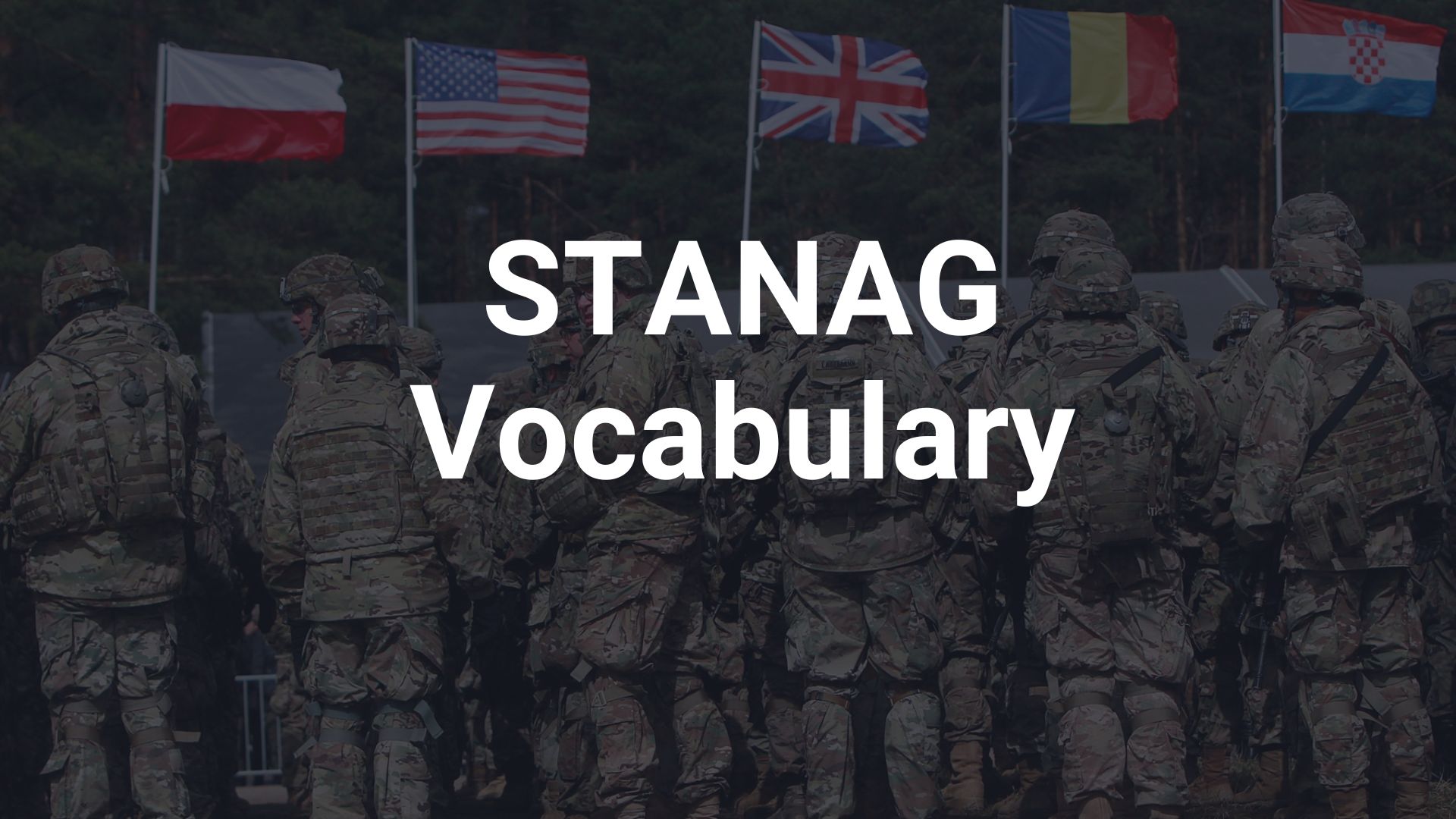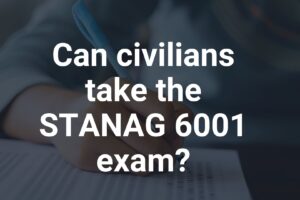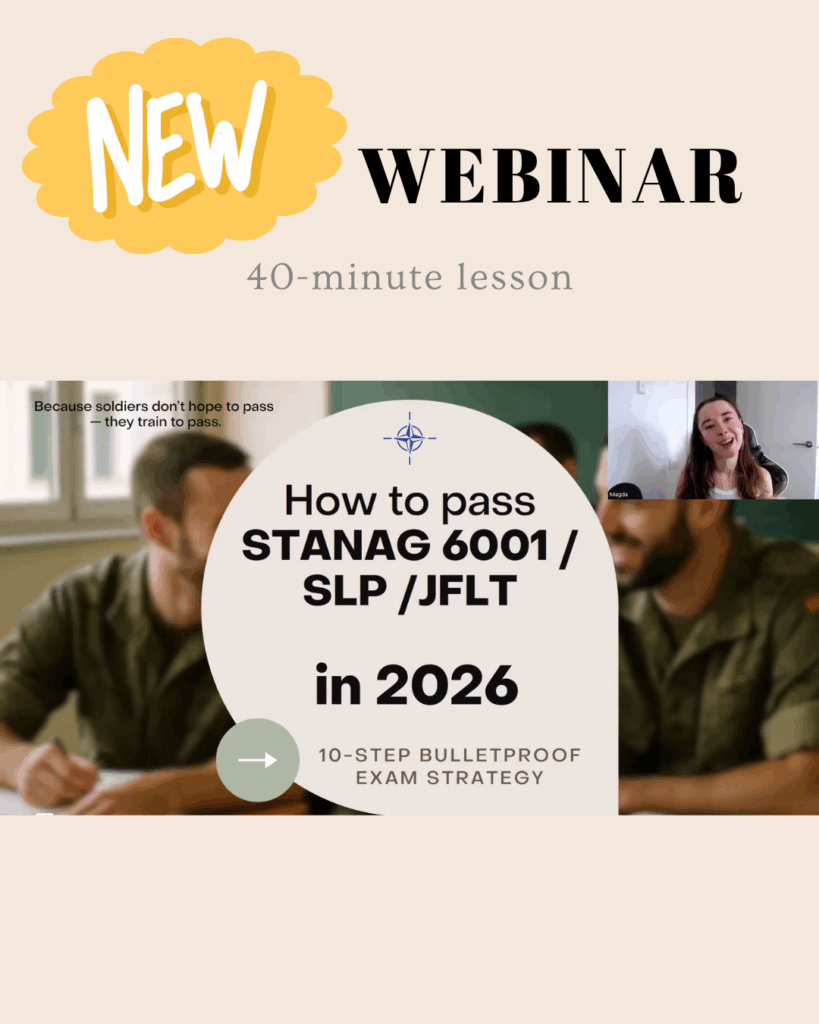
STANAG 6001 Vocabulary – how important is military vocabulary on your NATO STANAG, SLP or JFLT exam?
Have you ever wondered how much military vocabulary you need to learn in order to pass STANAG 6001 exam?
It turns out that probably not as much as you might think. However, you should be STRATEGIC with the vocabulary you learn.
If you prefer to watch videos, instead of reading – here is the link to my YouTube video about STANAG Vocabulary.
When it comes to the SLP SPEAKING PART, you should focus on the following:
(According to the types of tasks)
- Presentation/ Interview: you might be asked to describe a vehicle you use at work, your base (or the one from your deployment), your duties, education, experience, military career, deployments, your colleagues.
- Role-plays: topics may be connected with your tasks, work, career, interactions with superiors, colleagues, foreign partners.
- Discussions: current military and political events and issues, missions, operations, terrorism, military life, international aid and cooperation, training, security, technology, R&D, innovations
- Monologues: tasks related to deployment, transport, equipment, security, training, accommodation, board, recruitment, incidents, discipline.
What to revise:
-
spelling using the Military Alphabet (The NATO Phonetic Alphabet),
-
military ranks (and their tricky pronunciation!),
-
specific vocabulary related to vehicles you use (aircraft /tank, etc.) and your field, buildings on the base,
-
vocabulary related to military technology (L3),
-
modern equipment vocabulary
When it comes to the WRITING part – military vocabulary will be mostly found in reports, memoranda and essays/articles (incidents, problem solving, analysis)
Level 2 – situational reports
Level 3 – analytical reports and essays/articles
What to revise:
vocabulary related to the shooting range, fire drills, training and security measures
TIP: make a list of possible problems that may happen during a military exercise or maneuvers, some tasks and skills
Here are a few EFFECTIVE VOCABULARY LEARNING STRATEGIES:
- Learn collocations instead of single words
- Learn new words in context (e.g. by spotting them in article headlines or listening to podcasts)
- Use the Vocabulary Planner (list of words that you want to use more in a given month)
- Upgrade the verbs you use
- Learn intensifying adverbs
- Draw mind maps – great for visual learners!
And some RECOMMENDED VOCABULARY LEARNING TOOLS:
- DICTIONARIES: WordReference, Macmillan Collocation Dictionary
- ONLINE TOOLS: Youglish
- PDF TOOLS: Vocabulary planner
- BOOKS: Flash on English for the Armed Forces (basic military vocabulary), English Collocations in Use
- ChatGPT (You can ask ChatGPT for synonyms or antonyms of words that you already know. You can also ask it for collocations of words related to a particular topic, such as global conflicts. Morover, the Chat will create gap filling exercises for you and examples of sentences.)
In the end it’s not as scary as it may seem initially.
In my opinion when it comes to LEVELS 3 and 4, what is more important than specific military vocabulary (such as vehicle parts) is the vocabulary related to geopolitics, NATO and defense strategies and that’s what one should prioritize. You can learn this kind of vocabulary by listening to podcasts and reading articles. However – you need to pay attention and be very intentional with your vocabulary learning.
That’s why I created STANAG 6001 Vocabulary E-book.
Tag:militaryenglish, stanag, vocabulary




